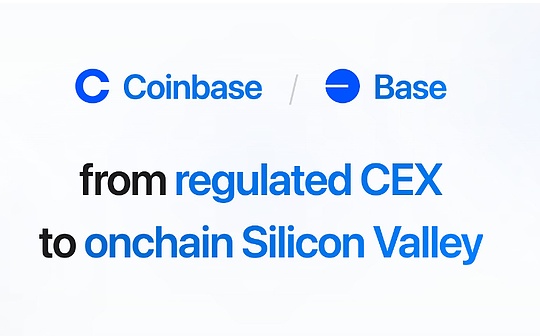
Author: haotian
It has been nearly a month since @babylonlabs_io The main network has been online, but the expected BTCFi market response is not as enthusiastic as expected.So, what problems were exposed during the first phase of Babylon pledge?Is Babylon’s sustainable narrative logic valid?Is Babylon’s market expectations overestimated?Next, let me tell you what I think:
1) Babylon’s innovative core adopts Self-Costodian self-hosting method, allowing users’ BTC assets to be locked in the Bitcoin main network in the form of script contracts, while also being able to output “security consensus services” on many BTC layer2s and then obtain other extensions.The rich benefits provided by the chain.
Only the first half of this sentence is true at this stage. Indeed, Babylon’s sophisticated and complex cryptographic algorithm architecture allows users to realize the possibility of additional benefits when holding BTC in self-hosted form. Other CeDeFi or Wrapped forms allow native BTC to break through the originalChain constraints require a third-party hosting platform, and Babylon does not really need it.If the wallet supports it, users can see that the BTC they pledged to the Babylon protocol is still displayed in their balance.
And the second half of this sentence can only be considered an immature “pie”.Because to convert Babylon’s security consensus into services and generate profits, the following prerequisites are required:
First: There must be a large number of users, including Validators nodes with a large proportion of voting rights, to pledge BTC in Babylon and deploy it in the Bitcoin main network protocol;
Second: we must aggregate a large number of LST assets and generate strong liquidity to form the foundation for the growth of ecological users, TVL, etc.;
Third: There must be a large number of new layer2 POS chains to “procure” the security consensus services provided by Babylon and provide sustainable Yield benefits;
2) At present, the Babylon agreement has only opened the first phase of limited staking of 1,000 BTC, which can only be considered as the experimental launch stage, but it has exposed many problems, which makes it challenging to meet the above three prerequisites at the same time.for example:
1. The interaction between the staking process and the Babylon protocol will cause higher “transaction fee losses”.
Including: the surge in network transaction Fee losses caused by the staked network Fomo effect, as well as the corresponding handling fees generated by subsequent protocols such as Unbond and Withdraw.
Take the first period of pledge War as an example: If it is limited, only 0.005 BTC can be deposited per transaction, and only the first 5 in-block transactions are valid.Suppose that a Validator wants to deposit 100 BTC, it needs to initiate 20,000 transactions on the chain within 1 hour, and confirm it earlier than other competitor transactions.This will inevitably lead to a short-term surge in online transaction fees, greatly increasing the cost of stakers. It is understood that the miner fee ratio exceeds 5%.(For reference only, the specific data shall be subject to the official)
2. The native BTC deposited by Babylon and its ecologically circulating Wrapped version BTC is not limited to 1:1.
Since Babylon does not have a Wrap version of BTC directly circulated, the Wrapped version of BTC circulated in the Babylon ecosystem is provided by some nodes participating in the staking, including: @SolvProtocol, @Bedrock_DeFi, @LorenzoProtocol, @Pumpbtcxyz, @Lombard_Finance, etc.These institutions Validators pledged several BTCs in Babylon, but the liquidity of its aggregated Wrapped version BTC is far greater than the amount of BTC they have pledged (in fact, it also needs to expand the scale of LST liquidity).
This means that although the Babylon protocol can ensure the security of native BTC assets pledged on the Bitcoin main network, Babylon cannot guarantee the liquidity risks and absolute trust of various Wrapped versions of BTC circulating on the aggregation platform.These aggregation platforms also need to rely on a series of credit endorsements such as public audits and contract transparency.
In other words, if Babylon is compared to Lido, the user will not have the corresponding stETH for circulation after depositing ETH. The actual liquidity is provided by aggregation platforms such as Solv Protocol (SolvBTC.BBN), BedRock (uniBTC).Babylon is like a central bank with partial reserves, which will only suppress a little reserve fund to constrain its liquidity providers (local bank roles). Overall security must be guaranteed by the unified cooperation between the central and local governments.
The above two points determine that Babylon only occupies a “safety reinforcement” role in this big wave of BTCFi. The real good show still depends on the aggregation liquidity platforms such as Solv Protocol, BedRock, Lorenzo, and PumpBTC.Sing.
The key is that the market sentiment that starts too Fomo will seriously increase the entry “cost” of these participants, which undoubtedly strengthens the “exit” pressure on Yield’s subsequent interest income.
Just like the development trends of the Eigenlayer AVS service market are related to the lifeblood of the Restaking track, the progress of the commercialization of Babylon’s security consensus service output has also become a market answer that Babylon must deliver.
3) So, how can Babylon’s “shared security” service paradigm generate sustainable Yield benefits?In my opinion, the market that relies solely on Babylon’s social security consensus to inspire evolution is not enough, and another stock is needed to strengthen the POS chain demand pool.
In other words, Babylon maintains the narrative logic of upstream and downstream economic chains is not solid, and there is great uncertainty on the procurement side.
Suppose a newly built POS chain, to connect to the Babylon ecosystem, Babylon must first generate AVS services from the complete node Validators network. For example, Eigenlayer has been established in the AVS-as-a-service narrative, providing a series of decentralized sequencers and oracles., ZK coprocessor and other services.
At this stage, perhaps it is just because the mainnet protocol is launched too early, and Babylon does not have mature commercial services.The market’s expectations for Babylon seem to be the only way to actively participate in the competition for pledge voting rights, and then aggregate liquidity and start a point-point war, and ultimately, it depends on expanding the overall Babylon liquidity market cake to share spillover dividends.This may work, but it will be too “passive” to promote ecological development by stacking market expectations.Is there an “active” BTCFi live-in production plan?
Yes, I mentioned in my previous article that Babylon essentially builds a “society security consensus” through economic model constraints to provide BTC layer2 with a “secure” batch replication paradigm.It is also necessary to build various basic modular components of chains based on ZK technology to strengthen the “technical security consensus” replication paradigm of rapid chain start of BTC layer2.
Taking the ZK general architecture application chain @GOATRollup as an example, the @ProjectZKM team built a general layer2 framework based on the underlying ZK technology, including: the underlying zkVM general execution layer, the Entangled Rollup Network shared interactive communication layer, the decentralized Sequencer sharing layer, etc.Ultimately, generalized component services are used to provide layer2 with a Native cross-chain, unified liquid interoperable operation center without cross-chain bridge.
Compared with Babylon, Goat locks the user’s native BTC on the Bitcoin main network, then provides 1:1 Wrap version of BTC (goatBTC), and uses decentralized Sequencer native mining income (yBTC), and introduces Pendle bonds.Designs such as interest separation to enrich the possibility of interest generation.
It can be believed that Goat Network is similar to the “Rollup as a Service” service provider in the Ethereum layer2 system. It can output a general modular paradigm to expand the scale of the BTC layer2 POS chain and provide a sustainable BTC income economic model to ensure thatThe practicality of its narrative.
above.
It is not difficult to see that the greatest value of Babylon’s innovative cryptographic security paradigm lies in the rapid aggregation of the originally scattered BTC market liquidity and forming ecological development potential energy. The scale and efficiency of core liquidity capital are the underlying logic that supports its narrative establishment.
To expand the scale effect of the POS chain and increase the commercial output of security consensus services, we must rely on zk technology as complementary and promote the modular sharing of component services such as Sequencer, Interoperability, and DA.
As for whether Babylon is overrated or is it wrongly expected?I believe that the above views will inspire you.








